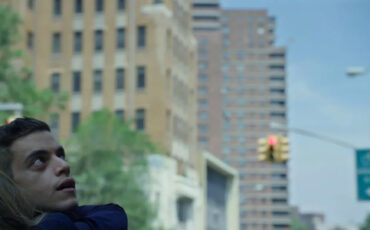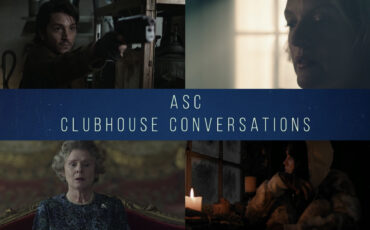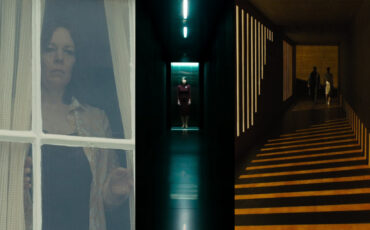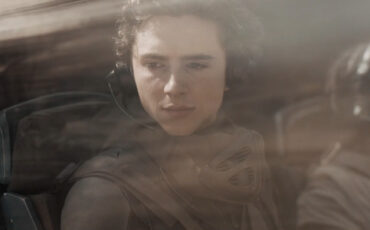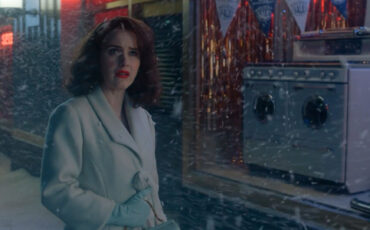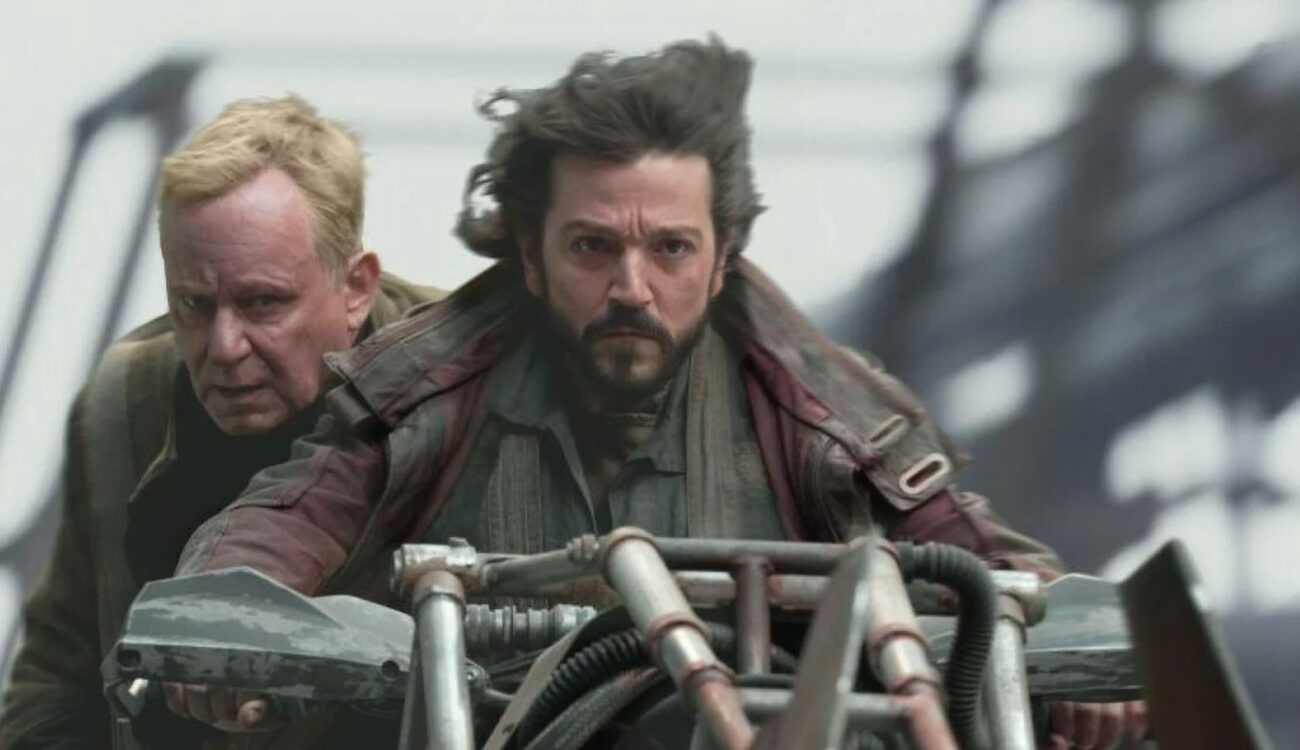
The Academy of Television Arts & Sciences has recently announced the Emmy nominations in this year’s competition, and it’s exciting to see some well-loved shows and series among the contestants. As a huge fan of the Star Wars universe in general, and Disney+ “Andor” in particular, I’m especially pleased to find its title mentioned in different categories. For example, the season’s grand finale – episode 12 “Rix Road” – is officially in the race for the “Outstanding Cinematography For a Series (One Hour)”. Lucky for us, director of photography Damián García took part in the ASC Clubhouse Conversations and broke down his visual language for the nominated episode. What makes cinematography in Andor so special, and how did they achieve a uniquely raw and realistic look within one of the most famous film universes of all time? – Let’s find out together!
In the extensive interview with cinematographer Dave Perkal, Damián García admits that he was surprised when he got a call from the series showrunner and writer, Tony Gilroy. Then came the excitement as Damián read the first few scripts and realized that the limited-series “Andor” would take a recognizable but totally unique route within the “Star Wars” journey. The story felt very mature and grounded, but also universal, with themes and narratives that could take place anywhere – and cinematography had to support this special approach right from the start.
You can watch the entire ASC Clubhouse Conversation with Damián García for free on MZed.com.
Cinematographic references for the 12th episode of the series
The last episode of Andor’s season one bears the name “Rix Road” and follows the main character Cassian (performed by Diego Luna) as he returns home to Ferris for the funeral of his mother. Yet, these intense 57 minutes feel like we are sitting on a powder keg, while we watch the locals’ rebellion against Empire unravel.
Cinematographer Damián García recalls that the script for this episode was extremely long and included many complex scenes (which is no surprise when we know how much happens within one hour). In the beginning, he and the director Benjamin Caron didn’t know where to start and how to approach this story visually.

After some discussion, they decided to shoot the episode in an almost documentary style, to make it feel very grounded, real, and emotionally relatable. One of their references for the riot scenes was the film “The Battle of Algiers” (1966). This war feature by Gillo Pontecorvo was shot in the style of a newsreel using documentary-type editing and engaged mostly non-professional actors who had lived through the Algerian war themselves. This gave the film a sense of authenticity, which the creators of “Andor” were aiming for.
Emmy-nominated cinematography in Andor: when great art direction works wonders
So, creating a “real” atmosphere was imperative to the entire series and especially in the final episode of the season. The filmmakers used a couple of different tools. The biggest treat for Damián was shooting on location, as the production designer Luke Hull constructed the entire town of Ferris paying meticulous attention to detail. There were streets, shops, restaurants, and other amazing interiors as well as exteriors, where you could literally go for a walk. In times when major sci-fi shows are opting for virtual production on a so-called LED Volume (and yes, I’m referring to another Star Wars series titled “Mandalorian” as well), the decision to physically build the entire town of Ferris stands out as much less conventional.
At least for me, it’s the best scenario to shoot. I mean, no matter what, in Andor, there is a lot of VFX. But the idea of having real worlds, real grounds, real feelings – is always better.
Damián García, a quote from the ASC Clubhouse Conversation
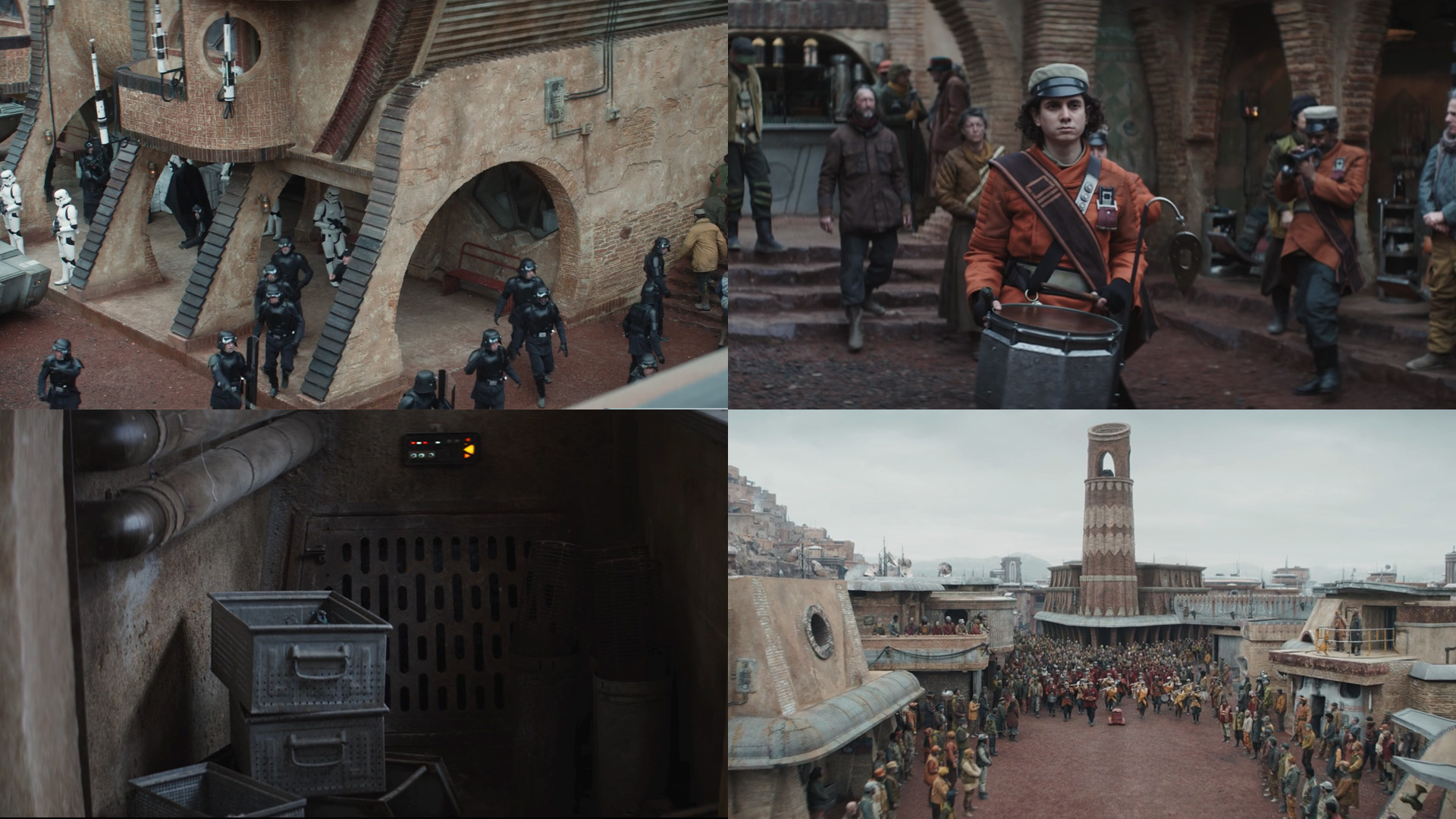
What you notice in the film stills above is also how each and every part of the film’s design works together. Colors of costumes, buildings, instruments (look at those drums!), other props, and even the ground create a beautiful consistent palette that every artist wants. Damián García agrees: in such a constructed environment, where everything is thought through, it’s only a matter of a good frame and nice authentic light and your shots become small cinematic wonders.
Camera movement to support the story in Andor’s cinematography
The episode nominated has a very specific rhythm, gradually building suspense and capturing our focus before the significant action unfolds. You literally can’t look away – fearful of missing even the slightest detail. Damián García explains that they were able to encourage this feeling with the help of carefully constructed camera movement and above all, with its development throughout the story. There is nothing random about it, as motion is a powerful visual tool.
At first, the camera remains slow and steady. It moves rather quietly and smoothly – on a crane or a dolly – locking in on the characters or following their path. This is something we would often see in spy cinema where suspense reaches its peak and you sense the imminent arrival of an electrifying moment about to unfold.
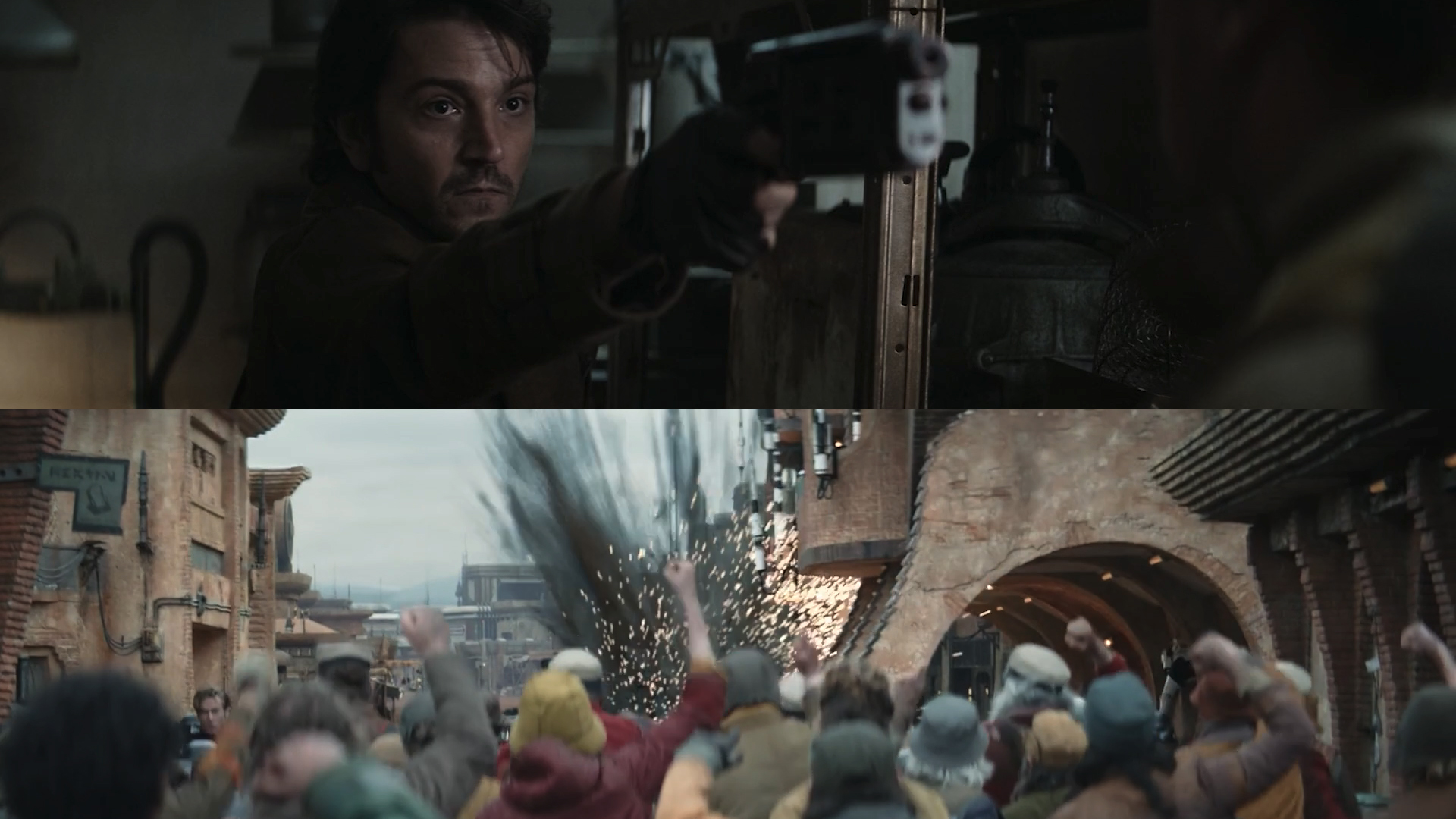
When the danger becomes real – as in the instance with Cassian being discovered – the visuals get a bit more hectic leading up to the moment when the actual riot erupts. And then it is pure battle chaos, with wild hand-held camera movements, naturally shaking frames, fast-paced action, and a haze of smoke. These kinds of cinematography decisions have a tremendous impact on us and how we react to the events on screen. But of course, they need to be deliberate and suitable to the story. As Damián underscores, the battle was probably the most challenging part for VFX artists, as a shaky camera, lots of motion blur and smoke is a killer combination for tracking and compositing. So, it had to make sense and be worth it, and I think it delivers on both points.
Eye-level camera framing as an effective tool for emotional impact
Another cinematography tool that truly grounds the chaos of Ferris is quite literal. They were obsessed with the idea of an eye-level perspective almost the entire time, admits the director of photography. As a result, we watch the events either close to the characters, from their point of view, or from ground level when they fall after the explosion or when they crawl. Just look at a couple of the shots below. What feeling do they stir in you?
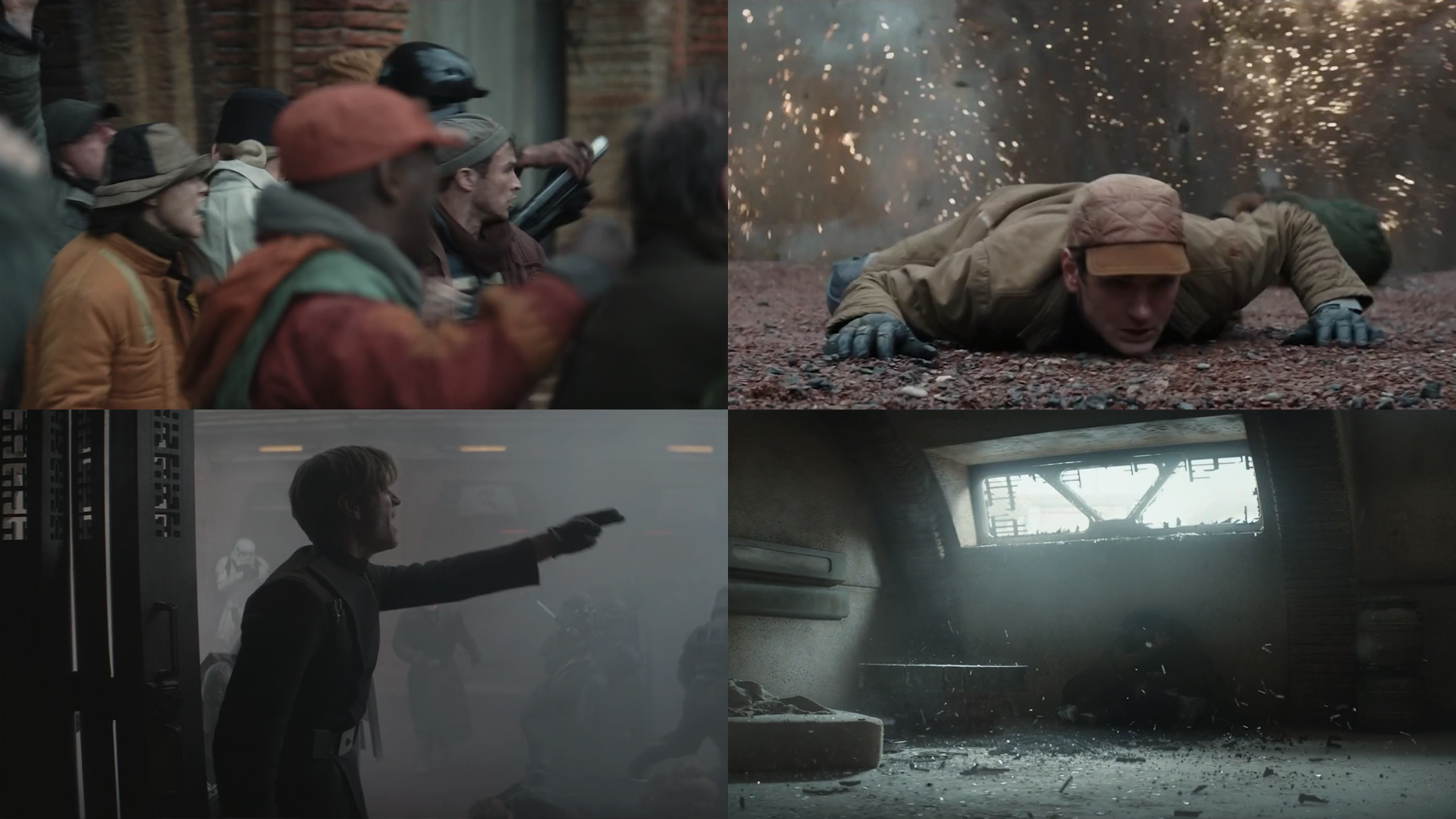
Damián García explains that oftentimes such battle scenes would be captured in long aerial shots, observing the epic action from above. (Especially in Star Wars Universe, it’s a regular practice due to the overall scale of the events). Being on the ground in the midst of people fighting and watching them at eye level creates a completely different feeling. It becomes more confusing and in a way – terrifying. And of course, this kind of framing also adds to that realism we talked about before, a signature sign of the cinematography in Andor.
Light and shadows for creating the right atmosphere
A lot of the scenes in the Emmy-nominated episode happen outside. In its melancholic wide shots of the funeral parade, we can witness the beauty along with the massive exterior explosions afterward. Yet the light and the atmosphere remain consistent, no matter what. On top of that, Damián mentions that he loved how harmonic this location looked in the shadow of the overcast. As the creators of the show needed around 2 weeks to shoot the riot scenes, a reasonable question arises: how did they convince the sun to play along?
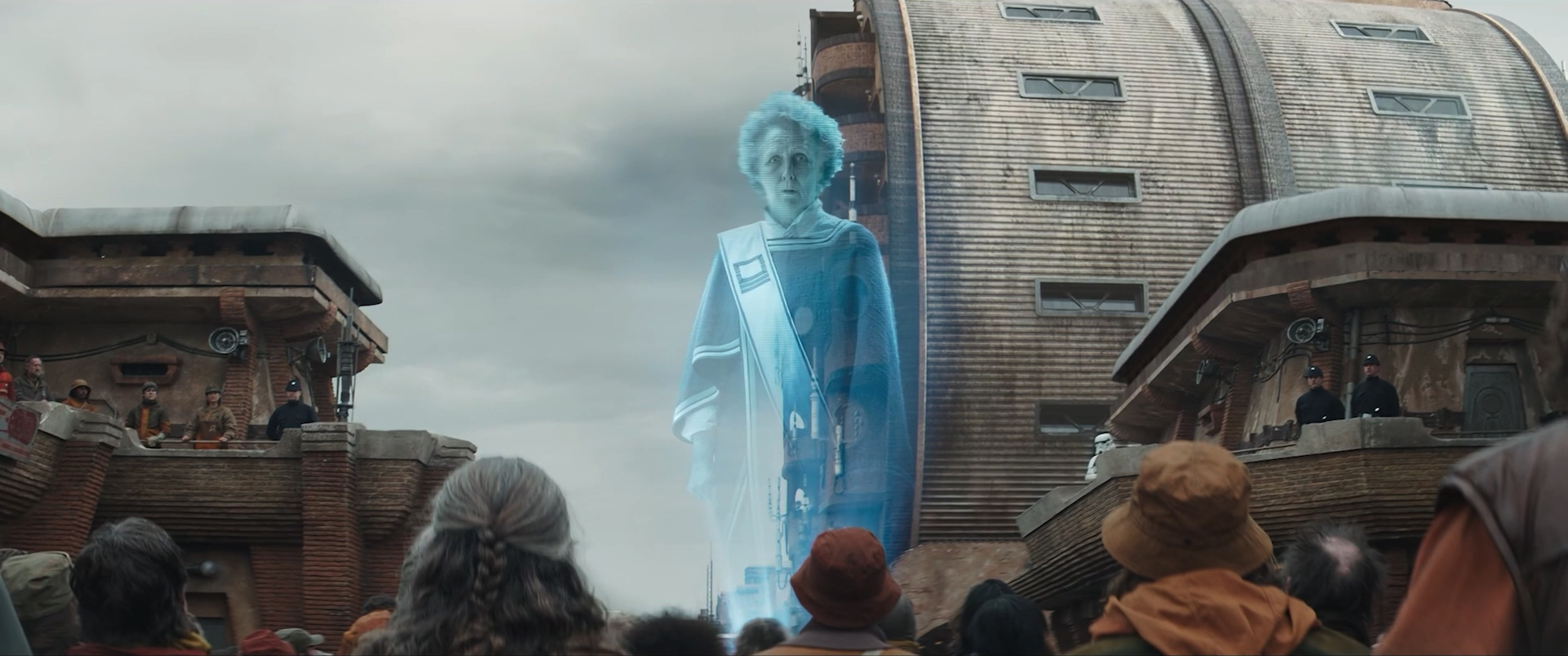
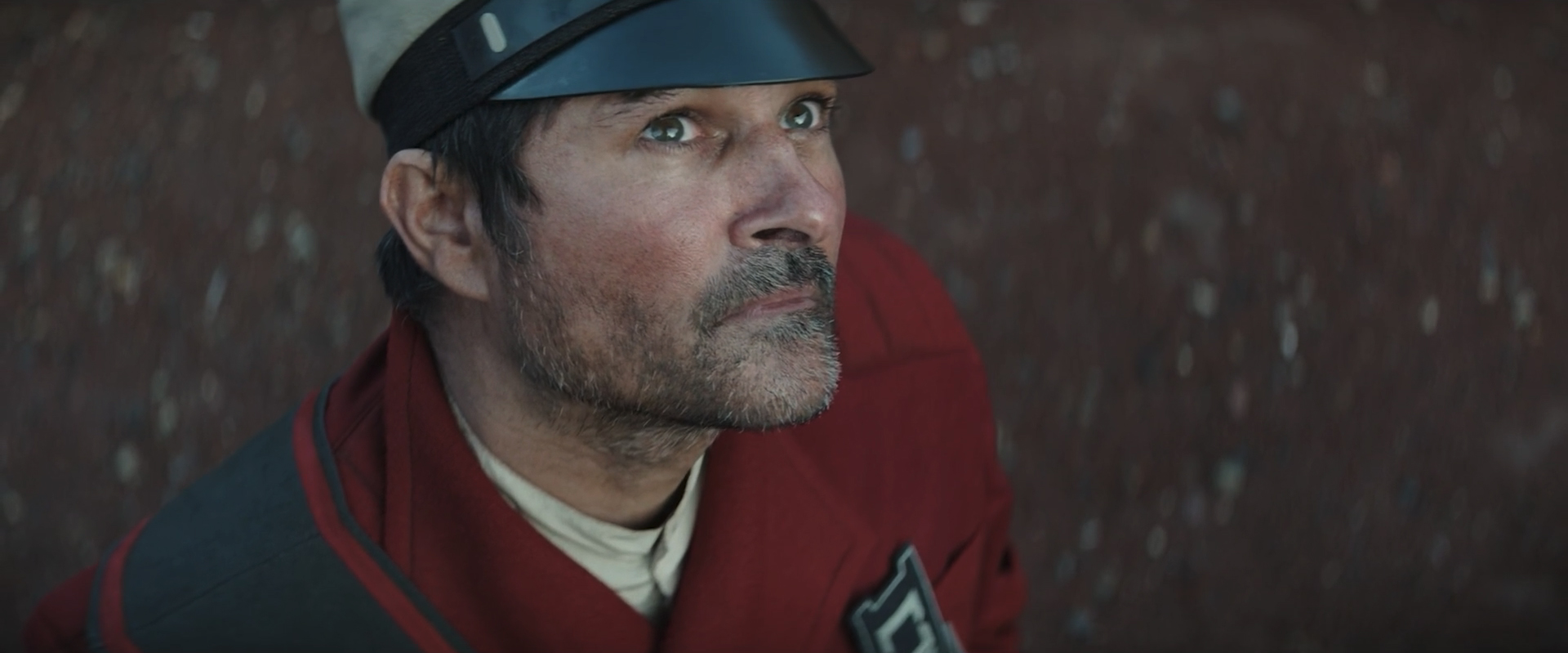
Well, every cinematographer knows that controlling exterior lighting is not an easy task. Since they decided to shoot the entire 12th episode when it was overcast, it required a lot of patience and special rigging. The good thing was that Ferris was built in a gigantic backlot, so they had a lot of space for cranes to block the sun and create artificial shadows in the vast majority of the shots.
The importance of preproduction in Andor’s cinematography
Damián García loves preproduction. He feels that if you prepare well enough in advance, you can improvise later. And seeing how they tackled the complicated action in Andor’s finale, it’s difficult to disagree. They not only relied on tons of astonishing concept art and thorough 3D visualizations of the sets but it was all done in advance. Together with the director, Damián went out in the field and pre-shot almost all the scenes with his iPhone. They did this on location, spending a lot of time there during the construction phase, which also helped in getting to know the place beforehand.
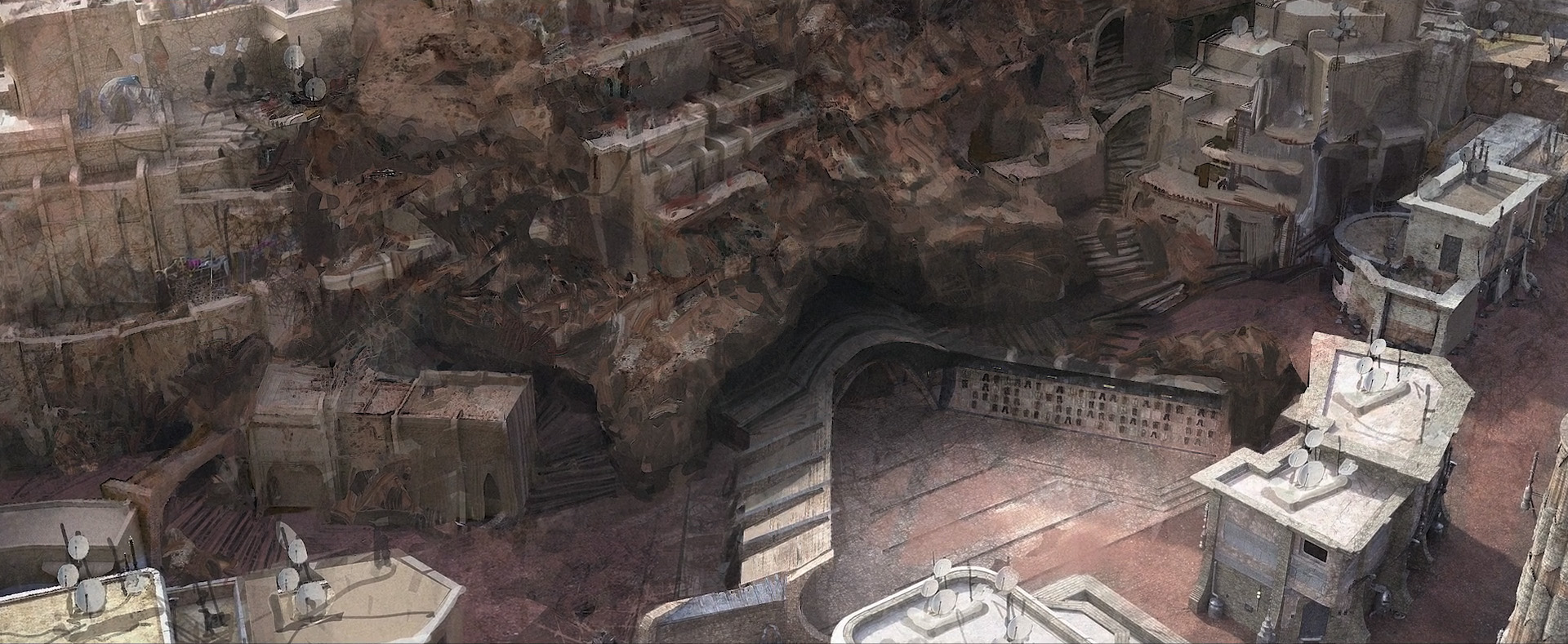
The “Rix Road” episode – as well as the rest of the show – was shot on Sony Venice with Panavision C- and G-series Anamorphic Primes with no filtration. For Damián García, it seemed like a perfect combination. When he shoots anamorphic, he doesn’t want to feel the lenses too much. And the glass of his choice won’t distract the spectators, yet it will create very cinematic visuals.
Conclusion
The 75th Primetime Emmy Awards are scheduled to be broadcast on September 18th. (However, there is some speculation that they might be postponed due to the SAG-AFTRA strike). Among Andor’s competitors for the cinematography award are the series “The Crown”, “House of the Dragon”, “The Marvelous Mrs. Maisel”, “The Old Man”, and “Wednesday”.
In the meantime, we recommend you check out other ASC Clubhouse Conversations on MZed.com, including the 13 new recently-added episodes. Some of them also take a peek behind the scenes of the shows mentioned above. And the best thing about it? You can watch the latest ones for free and learn filmmaking insights directly from industry professionals.
What else do you get with MZed Pro?
As an MZed Pro Member, you also have access to over 450 hours of filmmaking education, including The ASC Clubhouse Conversations, plus we’re constantly adding more courses (several in production right now).
For just $30/month (billed annually at $349), here’s what you’ll get:
- 54+ courses, over 850+ high-quality lessons, spanning over 500 hours of learning.
- Highly produced courses from educators who have decades of experience and awards, including a Pulitzer Prize and an Academy Award.
- Unlimited access to stream all content during the 12 months.
- Offline download and viewing with the MZed iOS app.
- Discounts to ARRI Academy online courses, exclusively on MZed.
- Most of our courses provide an industry-recognized certificate upon completion.
- Purchasing the courses outright would cost over $9,000.
- Course topics include cinematography, directing, lighting, cameras and lenses, producing, indie filmmaking, writing, editing, color grading, audio, time-lapse, pitch decks, and more.
- 7-day money-back guarantee if you decide it’s not for you.
Full disclosure: MZed is owned by CineD
Join MZed Pro now and start watching today!
How did you like the cinematography in Andor? Would you give it an Emmy for the 12th episode? Or which contemporary show deserves this award more? Share your opinion with us in the comments below!
Feature image source: a film still from “Andor“, courtesy of Lucasfilm.
